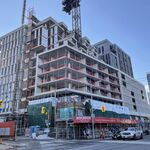44 North
Senior Member
Factoring the interest payments for the debt of its capital cost - and the significant amount in operating losses - each passenger on Sheppard currently costs almost $4.00.
How much would you say each passenger costs with a $5B extension? Let's say with a hypothetical (and generous) ridership increase of 50% (72,000 riders/day)?
Any way you look at it, it would still be grossly unfair to other transit users, taxpayers, and the city. I'd equate that to theft.
How much would you say each passenger costs with a $5B extension? Let's say with a hypothetical (and generous) ridership increase of 50% (72,000 riders/day)?
Any way you look at it, it would still be grossly unfair to other transit users, taxpayers, and the city. I'd equate that to theft.




